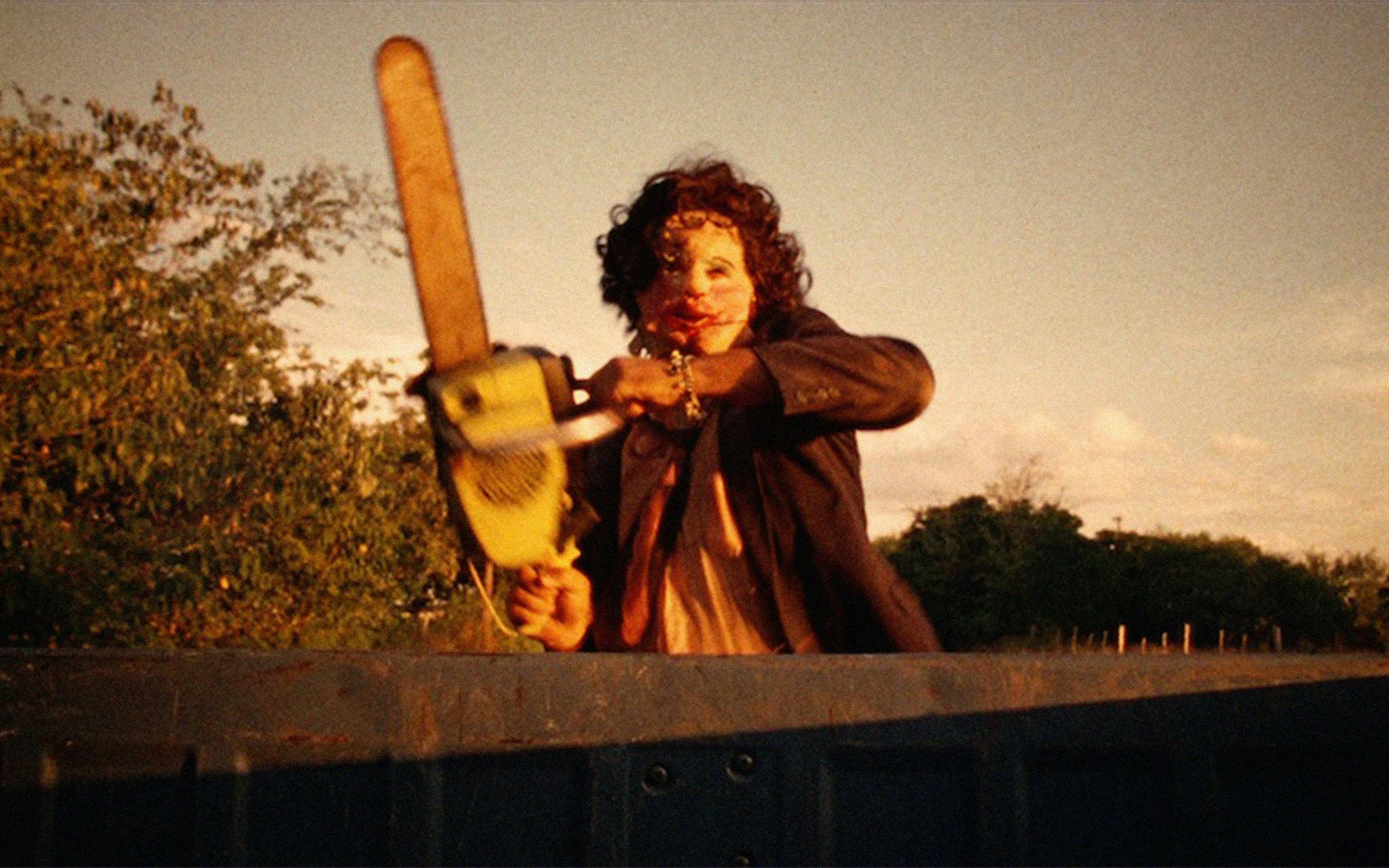On a recent rainy evening in Manhattan, five Texans gathered for a talk at the Museum of Modern Art. The discussion touched on the topics you’d expect: Technique. Composition. Cultural context. Thematic intent. And then there were more unusual questions raised. Like, when Leatherface drops Pam onto the meat hook, do you really see the moment of impalement?
“People on YouTube will write, ‘I saw the hook go through her chest!’ ” said actress Teri McMinn. “They’re adamant about it.”
We were assembled for a fiftieth anniversary screening of Tobe Hooper’s 1974 horror film The Texas Chain Saw Massacre, which first screened at MoMA less than year after its theatrical release. Just like Degas, de Kooning, or Abramovic, Chainsaw is in the museum’s permanent collection. It has been “judged to be [an] artistically significant landmark,” the museum’s department of film curator Ron Magliozzi said while introducing it. The screening was also part of a larger tribute to the Austin-born Hooper, who in addition to Chainsaw was best-known for Poltergeist (he died in 2017). A theatrical rerelease and fiftieth anniversary DVD boxed set will follow.
Controversial—it came with an initial “X” rating and an outright ban in the United Kingdom—at the time, Chain Saw was not just a horror classic but also an artistic groundbreaker. “One of the most important independent films in film history,” said film scholar and programmer Caryn Coleman of the Future of Film is Female, who joined Magliozzi in moderating the panel of Chain Saw cast and crew members Kim Henkel (coscreenwriter), Daniel Pearl (cinematographer), Ron Bozman (producer) and actors McMinn (Pam), Edwin Neal (the Hitchhiker) and John Dugan (Grandpa). “Despite the fact that it’s fifty years old, I feel like this is the kind of film that people watch it and then go, ‘I’m gonna go make a film!’ ”
The MoMA screening felt more like a rock show (or a Fantastic Fest event) than a black box theater setting, with an excitedly chatty sold-out crowd of four hundred people showing off numerous Chain Saw T-shirts, including one for the Gas Station, aka We Slaughter Barbecue, the actual operating restaurant, souvenir shop, and vacation destination at the film’s infamous location outside Bastrop. Fifty or sixty people raise their hand when asked if they were seeing it for the first time.
“Did you think of it as an exploitation film?” Magliozzi asked Henkel, who was decked out in a straw hat and summer suit like the Corpus Christi film professor that he’s been. “No. no. We just thought of it as entertainment,” Henkel said, which got a big laugh from the crowd. “Kind of like a roller-coaster ride.”
Magliozzi and Coleman also put the film in the late sixties context of the collapse of the studio system, which was followed by an early seventies boom in risk-taking cinema, wherein filmmakers reinvented our notions of genre. And not just in New York (Scorsese) and Los Angeles (Spielberg), but also, as Magliozzi put it, “upstart places like Austin, Texas.”
Chain Saw is a classic Austin independent film as surely as Slacker, and was made under similarly ramshackle and shoestring circumstances: shot on 16 mm, and filled with handheld work and creative cinematography and quirky editing, with some equipment that may or may not have been “borrowed” from the University of Texas film department. And then there’s the cast, which looks like it just walked out of Dazed and Confused.
When you see the film now, it’s clear that what was shocking in 1974 isn’t in 2024. The true surprise is the relative restraint that Chain Saw had in the first place. It’s claustrophobic and weird, and its lack of gore ups the horror, which plays out in your imagination rather than in front of your face. Hooper’s direction is leisurely, funny, and filled with dread as much as graphic violence; the villainous Sawyer family is as much Lynchian bizarre and comically Coen-esque as horror movie ghoulish. The chain saw scenes are not nearly as bloody or graphic as people remember them, while the climactic dinner scene is creepy and unnerving for entirely different reasons (not for nothing was the film originally called Head Cheese).
As with any innovative film, it’s noticeable that what seems like cliches now are part of the ground that was being broken at the time. It was one of inventors of the horror movie trope of “attractive young people going somewhere they shouldn’t” (though as John Bloom wrote in his legendary 2004 Texas Monthly feature, that inspiration also came from Hansel and Gretel). Leatherface was the original—and is still the creepiest—modern horror villain in a mask. And Marilyn Burns’ Sally was not only a championship-level scream queen, but the first (thirty-year-old spoiler alert) “final girl.”
And yes, for the record, if it’s not already clear, you never see the meat hook impale Pam. “I’ve won hundreds of dollars in five-dollar bets for real, betting people,” said Neal. They go, ‘It goes right through!’ ”

